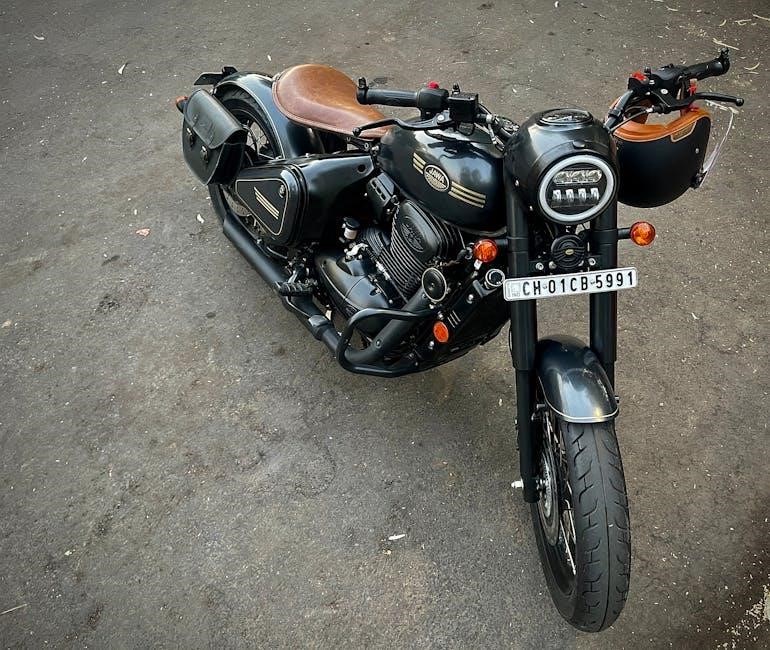Manual movement of power seats requires knowledge of internal mechanisms and components, including motors and wires, to safely and effectively adjust seat positions using various techniques and tools available.
Understanding the Basics of Power Seat Mechanism
The power seat mechanism consists of various components working together to provide smooth and effortless seat adjustment.
The system includes electric motors, gears, and wires that control the movement of the seat.
Understanding how these components interact is essential for manually moving the power seat.
The mechanism is designed to provide convenient and comfortable seating, but it can be complex to repair or adjust manually.
Familiarity with the internal workings of the power seat mechanism can help individuals troubleshoot issues and make necessary adjustments.
The power seat mechanism is typically controlled by a switch or button that activates the electric motor, which then moves the seat to the desired position.
Knowledge of the power seat mechanism’s basics is crucial for successful manual movement and adjustment of the seat.
The components of the power seat mechanism must be properly aligned and functioning correctly to ensure smooth manual movement.
Proper understanding of the mechanism’s basics can help prevent damage to the seat or its components during manual adjustment.
Locating the Horizontal Motor
Look under the seat to find the horizontal motor with light blue and tan wires connected to it for manual movement purposes only.
Identifying the Light Blue and Tan Wires
To manually move the power seat, it is essential to identify the light blue and tan wires connected to the horizontal motor. These wires play a crucial role in the seat’s movement, and locating them is the first step in the process. The light blue wire and the tan wire are typically attached to the motor, which controls the seat’s forward and backward motion. By identifying these wires, individuals can better understand the internal mechanisms of the power seat and take the necessary steps to move it manually. The identification of these wires is a critical component of the manual movement process, and it requires careful attention to detail to ensure that the correct wires are located and utilized. This information is necessary to proceed with the manual movement of the power seat.

Accessing the Seat’s Mechanical Components
Accessing mechanical components requires removing obstacles to reveal internal parts and mechanisms for manual adjustment purposes slowly.
Removing the Plastic Plate and Screws
To gain access to the internal mechanisms, it is necessary to remove the plastic plate and screws that hold it in place, this can be done using a screwdriver to remove the screws.
The plastic plate is usually located at the front of the seat and is held in place by two screws, once removed, the plate can be taken off to reveal the internal components.
The screws are typically small and require a screwdriver with a corresponding head to remove them, it is important to be careful when removing the screws to avoid stripping them.
The plastic plate and screws are designed to be removed and reinstalled, allowing for easy access to the internal mechanisms for maintenance and repair purposes, and to move the power seat manually.
This step is crucial in the process of moving the power seat manually and requires attention to detail to avoid damaging any of the components.

Manually Turning the Motor
Manual motor turning involves using a specific tool to rotate the motor and adjust the seat position slowly and carefully with a recessed female square drive mechanism available.
Using the Recessed Female Square Drive
The recessed female square drive is a crucial component in manually turning the motor, allowing users to rotate the motor and adjust the seat position with ease and precision. This drive is typically located on the end of the motor and is designed to fit a specific tool, making it easy to turn the motor by hand. By using the recessed female square drive, users can slowly and carefully adjust the seat position to their desired setting. The drive is usually the same size as the tool required to turn it, making it easy to find the correct tool. With the correct tool, users can manually turn the motor and adjust the seat position without having to rely on the power seat mechanism. This can be especially useful in situations where the power seat is not functioning properly.
Detaching the Slider from the Motor Screw Drive
Detaching the slider involves removing torx bolts to separate it from the motor screw drive mechanism slowly and carefully.
Pulling Out the Torx Bolts
To detach the slider from the motor screw drive, it is necessary to pull out the torx bolts, this step requires careful attention to detail and patience.
The torx bolts are typically located in a specific area of the seat mechanism, and pulling them out will allow the slider to separate from the motor screw drive.
Using the correct tools and techniques is essential to avoid damaging the surrounding components.
The process of pulling out the torx bolts may vary depending on the specific model and make of the vehicle, but the general principle remains the same.
It is important to consult the vehicle’s manual or seek guidance from a professional if unsure about the process.
By pulling out the torx bolts, the slider can be detached, and the seat can be manually slid forwards and backwards, allowing for adjustment and repair.
This step is crucial in the process of moving the power seat manually and requires careful execution.

Manually Sliding the Seat Forwards and Backwards
Manual sliding involves using the winders handle to move the seat slowly in desired directions with precise control and caution always.
Using the Winders Handle to Move the Seat
The winder handle is a crucial component in manually moving the power seat, allowing users to adjust the seat position with ease and precision. By turning the handle, the seat can be slowly moved in the desired direction, either forwards or backwards. This method provides a high level of control, enabling users to position the seat exactly as needed. The winder handle is typically designed to rotate in a clockwise or counterclockwise direction, with the direction of rotation determining the direction of seat movement. With the winder handle, users can manually adjust the seat position without relying on the power seat motor, making it a useful feature in situations where the motor is not functioning. The handle is usually located in an accessible position, allowing users to easily operate it and adjust the seat to their preferred position.

Alternative Methods for Moving the Seat Manually
Using an electric drill to spin the rod is a possible alternative method for manual seat movement and adjustment purposes only sometimes.
Using an Electric Drill to Spin the Rod
Using an electric drill to spin the rod is a method that can be employed to move the power seat manually, as indicated by various online sources. This approach involves attaching the drill to the rod and using it to spin the rod, thereby moving the seat. It is essential to exercise caution when using this method to avoid damaging the seat’s mechanical components. The drill should be set to a low speed to prevent damage to the rod or surrounding components. Additionally, it is crucial to ensure that the drill is properly secured to the rod to avoid accidents. By following these precautions, individuals can successfully use an electric drill to spin the rod and move the power seat manually. This method can be useful in situations where the seat’s motor is not functioning properly.
